.Testing
Unity Level Design Project / Portal 2 Custom Level
Level Build
Try the first two custom Portal 2 levels through the Steam Workshop:
Level 1Level 2
Try the original Unity project for yourself by downloading it here:
Unity Level BuildCustom Portal 2 Level Walkthrough Videos
Unity Project Walkthrough Video
Project Premise
The goal of this project was to create a playable level in Unity by implementating teaching mechanisms, creating interesting map gameplay elements, and using different types of feedback while creating an experience of progression. For the original Unity project, core gameplay mechanics were constrained to the Invector Basic Locomotion Template. Subsequently, for the custom Portal 2 level I took one of the puzzles I had created in Unity and reconstructed the puzzle with the constraints of Portal 2's mechanics.
Level Backstory, Setting, and Time (Unity Project)
Based on Portal: The player is a test subject experimenting with portals, put into an unexpectedly dangerous series of tests. The level takes place during the future at the Aperture Science facility, but before GlaDOS takes control. The Portal Gun has not yet been developed, but portals themselves are being experimented with.
Level Map
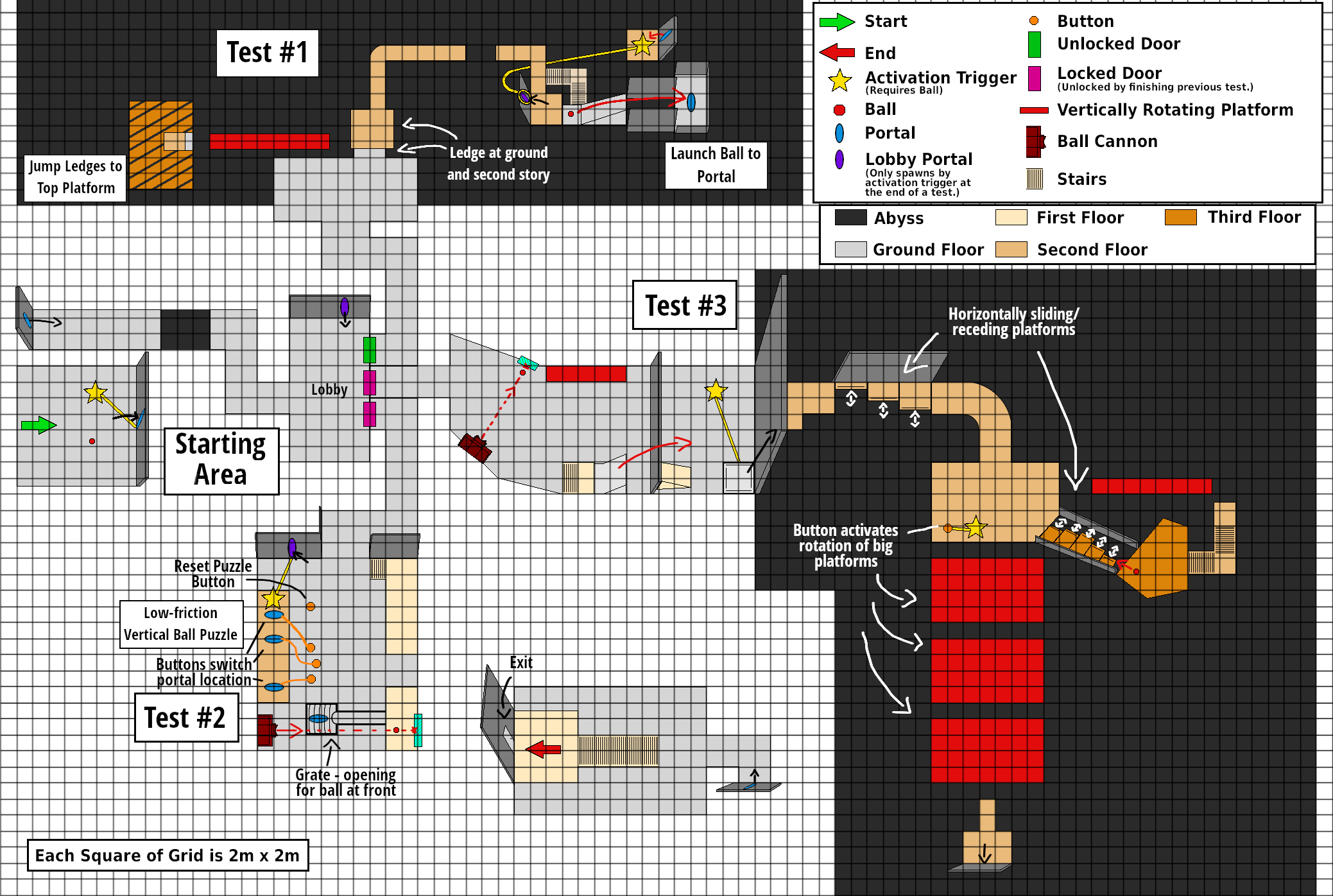
The layout from this original level map stayed largely the same with the placement/dimensions of obstacles only requiring minor adjustments. The level's structure is completely
linear, the door to the next test only unlocking after the previous test has been completed.
Puzzles
There are 3 main puzzle sections, 2 of which focus on spatial puzzles/obstacle course elements while the other focuses on a logical puzzle.
Test #1 focus on obstacle course elements, ending with the challenge to launch a ball across a gap by jumping on it in order to send the ball into a portal which teleports it to an activation switch.
Test #2 is a logical puzzle where players must send balls into low-friction chamber through a portal that can change location. Players have to find the right order of portal locations to send the balls through in order to let one roll into the activation trigger out the side of the chamber.
Test #3 consists of two sections, the first of which requires players to retrieve a ball and send it over a wall in order to power a lift, and the second which requires players to run across and roll a ball through receding platforms and then traverse giant rotating platforms, all with proper timing.
Level Environment
Starting Area:
Lobby:
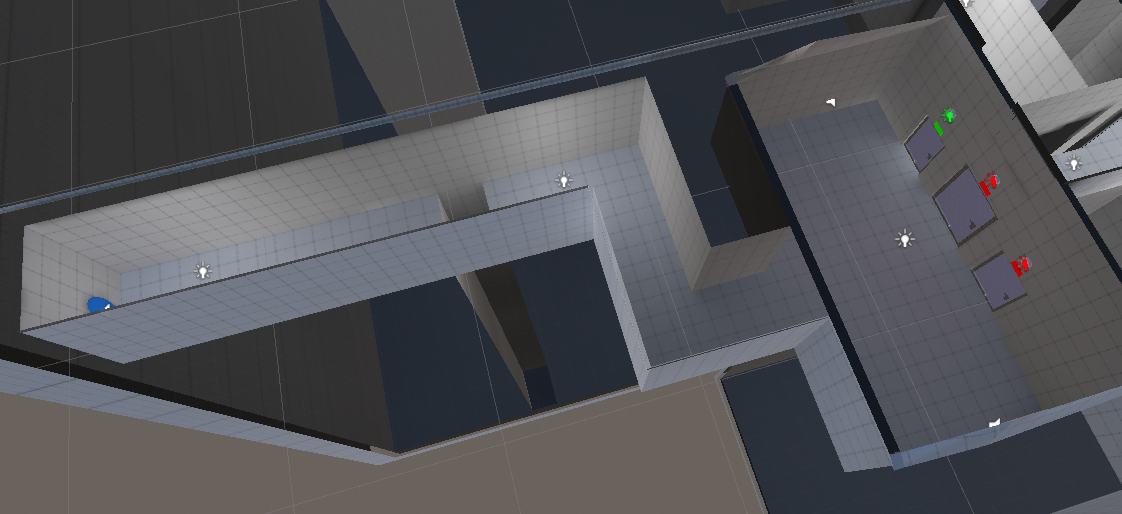
Test #1:

Test #2:

Test #3:

End Area:

Core Gameplay
Main Goal: To escape the facility (by solving tests).
- Skills:
- Walking
- Running
- Jumping
- Interacting (pressing a button)
- Moving balls with collision
- Launching balls with collision
Map Gameplay
Obstacles: Spatial and logical puzzles.
Power ups: The skill set of the player is minimally updated. Obstacles require the player to use more skills together, but don't introduce many new skills.
Checkpoints: Many checkpoints are used, placed before and after most obstacles to minimize frustration for the player.
Scripted Events: When Activation Triggers are triggered, objects spawn or are activated.
Gameplay Progression
Objectives Progression Chart: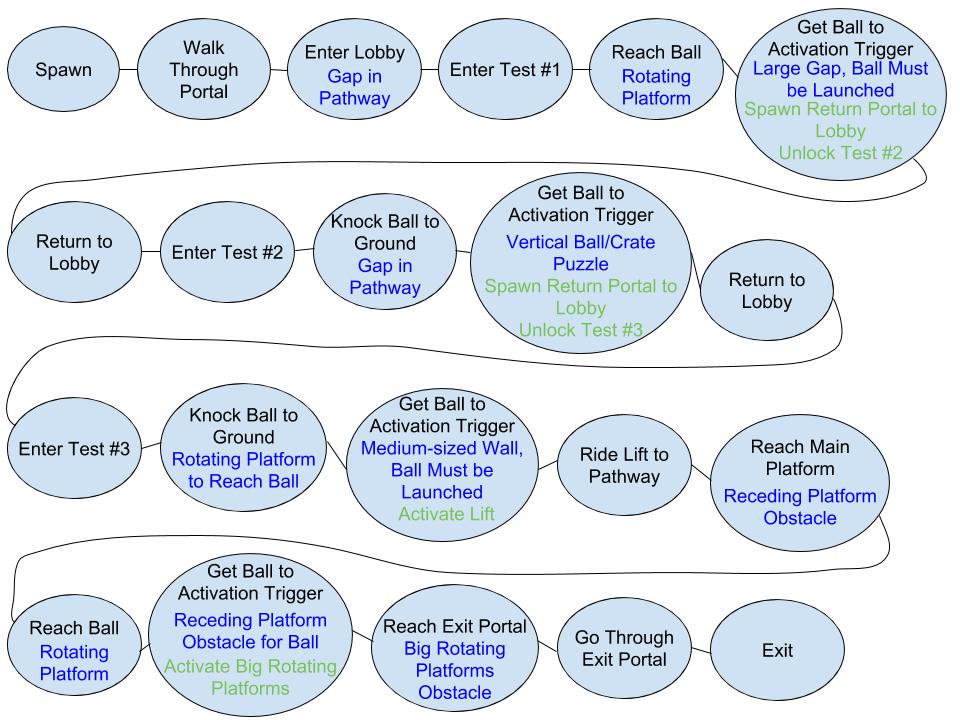
Skills Progression Chart:
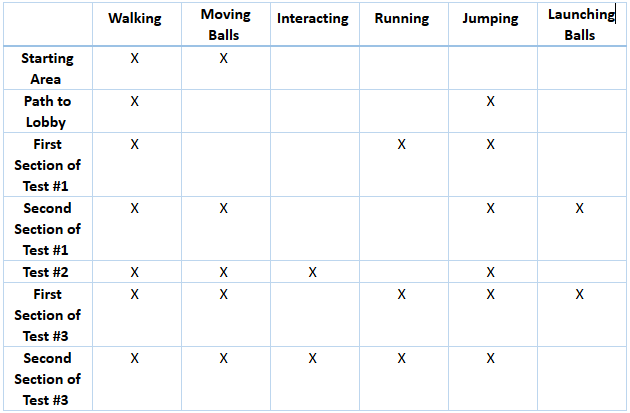
Obstacles Progression Chart:

All the skills - with the exception of launching balls - are fairly easy to use/perform. Combining them together while steadily introducing more difficult obstacles helps to create a gradual progression of difficulty through the level.
Pacing Mechanisms: The linear layout of the level itself, as well as space inbetween obstacles, are used to control pacing. Players have a chance to relax temporarily while moving through hallways or walking on pathways before they encounter the next obstacle, but don't have a choice of which obstacle to tackle next.
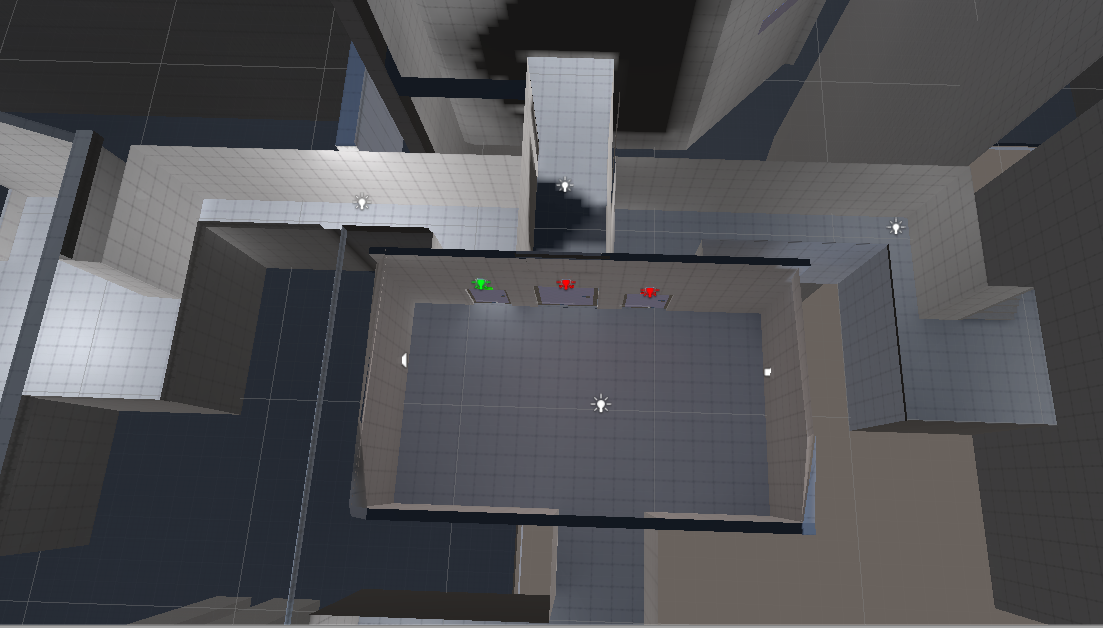
Teaching Mechanisms
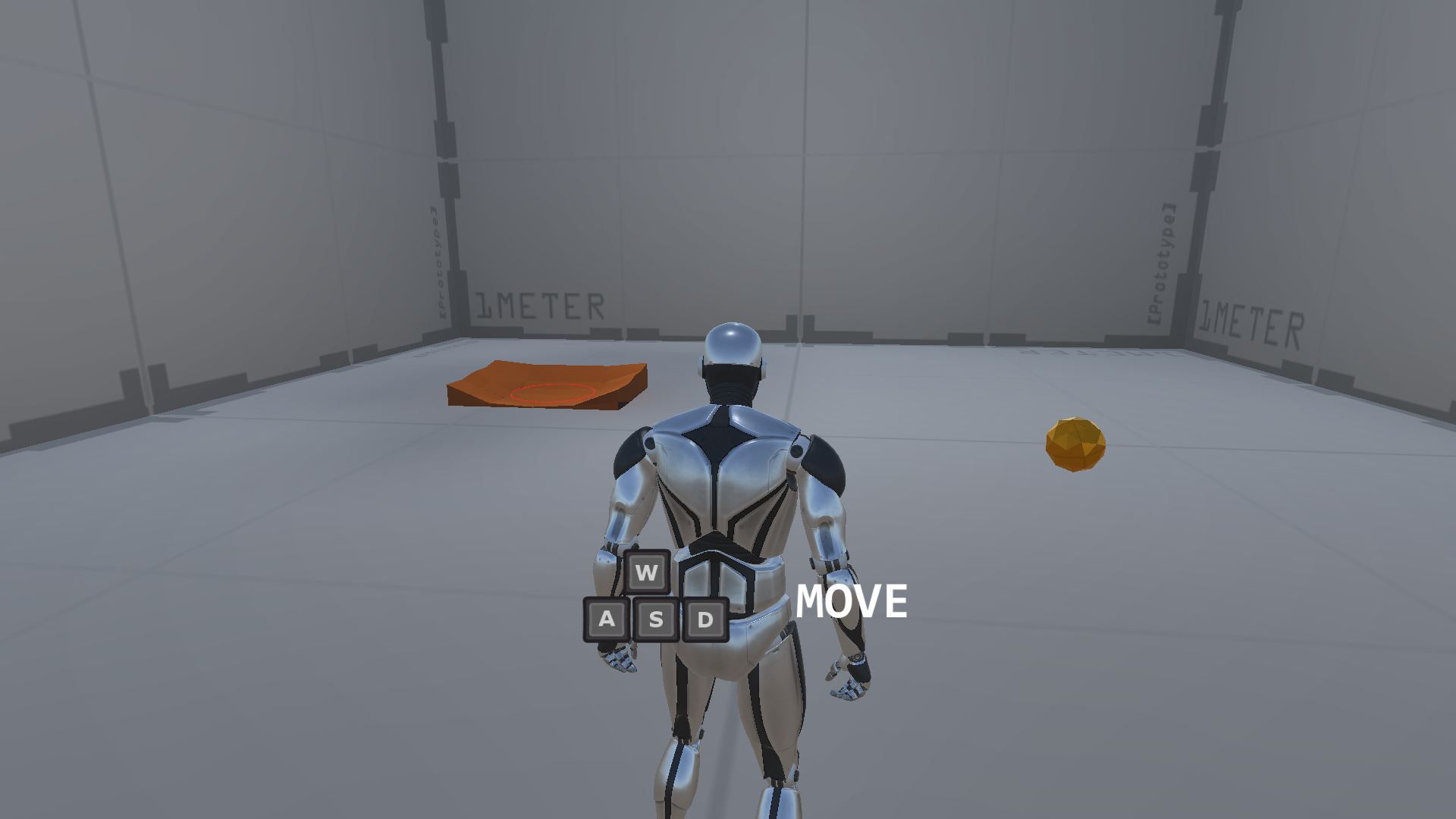

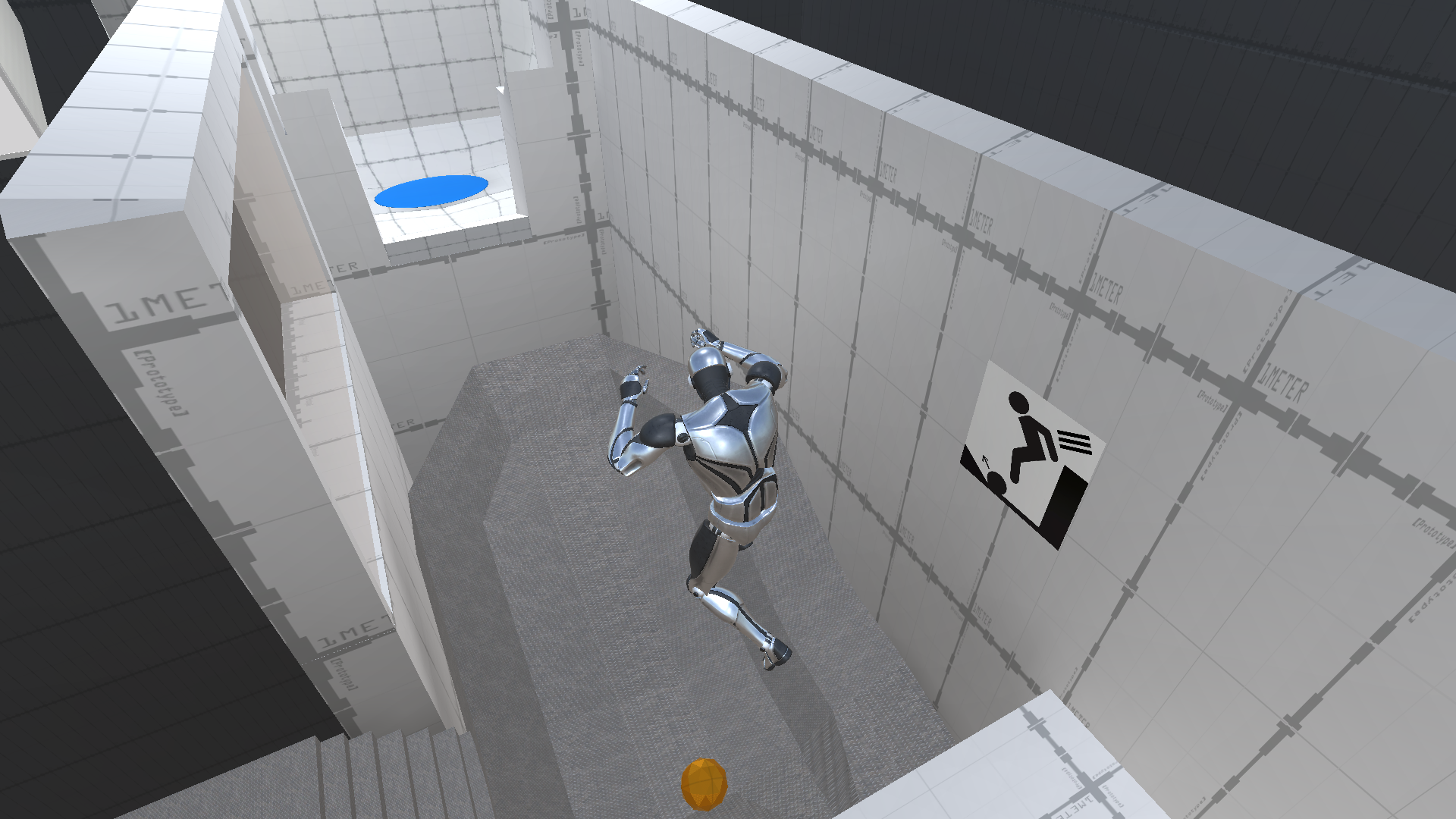
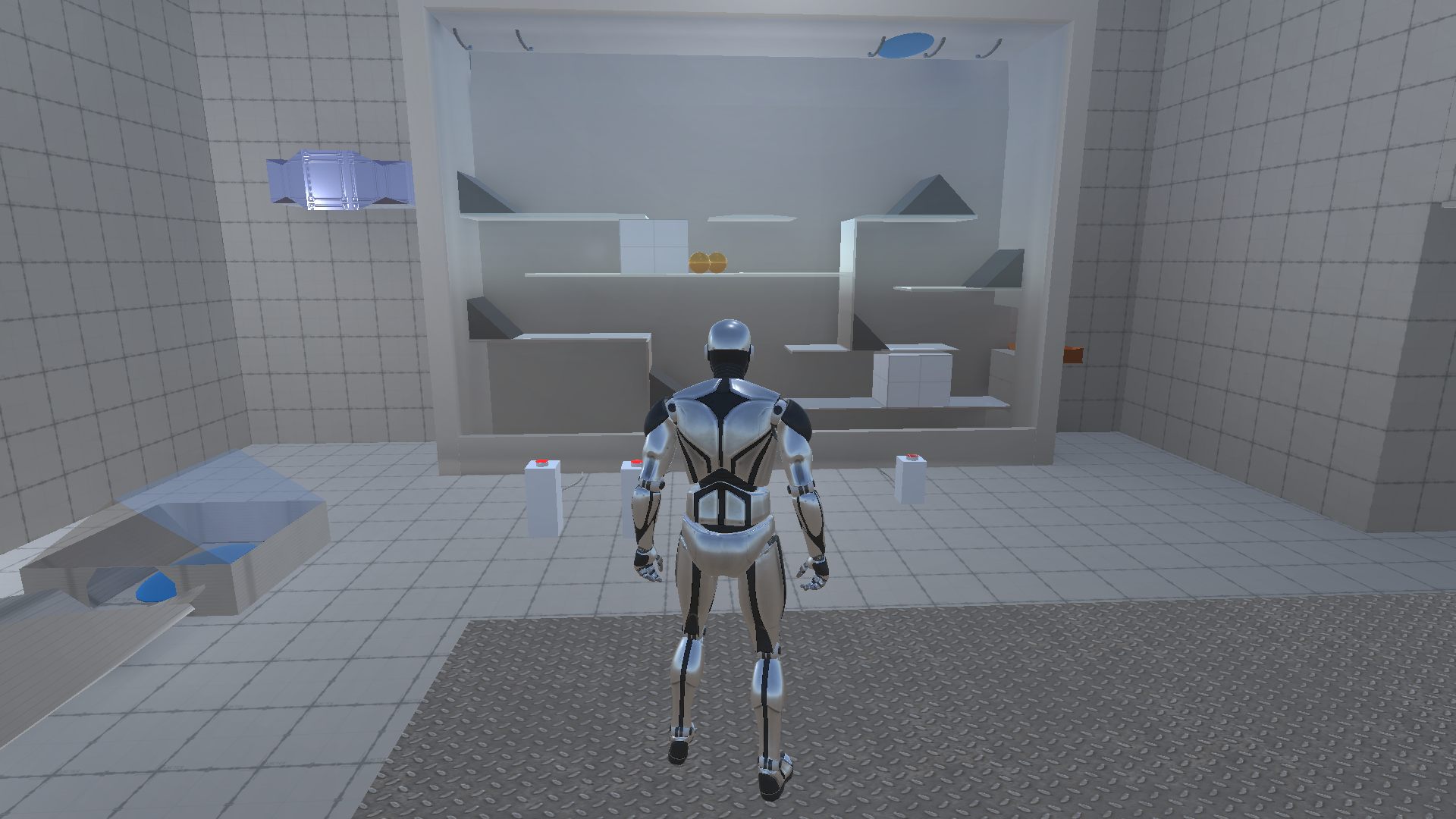
In my implementation of teaching mechanisms, I largely used skill gates in combination with formal tutorials (in the form of tooltips). The player also learns through experimentation with the balls. Teaching by example isn't used except when showing players they can launch the ball by jumping on top of it with the image of the stickfigure.
Feedback
Progression Tracking: Players can see their physical progress during tests and how many doors are left to unlock in the Lobby. After completing a test, the next door unlocks (also indicated visually through the lights above the doors), and the biggest door in the center indicates the path to the end of the level.

- Positive reinforcement:
- Unlocking doors
- Activating/spawning objects
- Visual feedback (such as lights)
- Audio feedback
- Rewarded Actions:
- Moving a ball onto an activation trigger
- Pressing a button
- Going through a portal
- Sending a ball through a portal
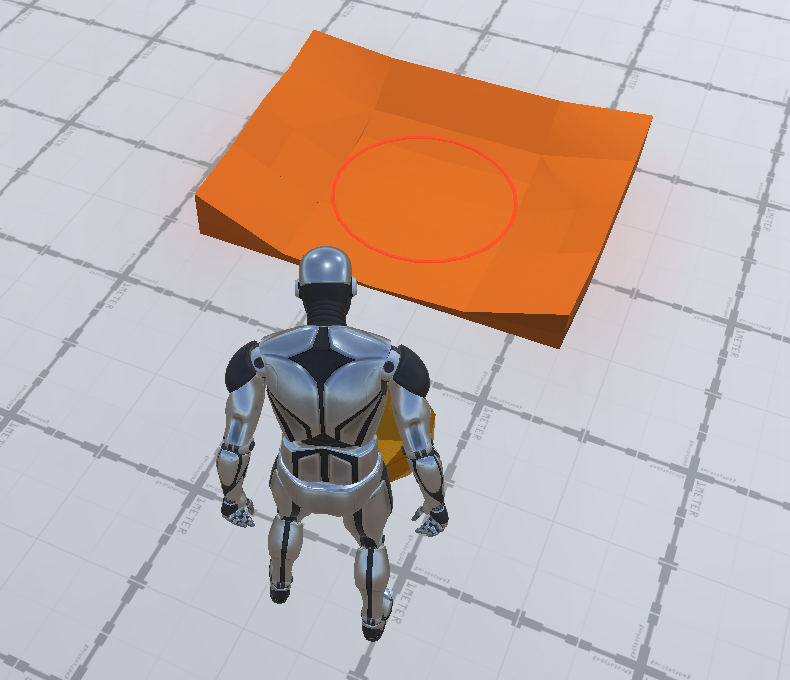
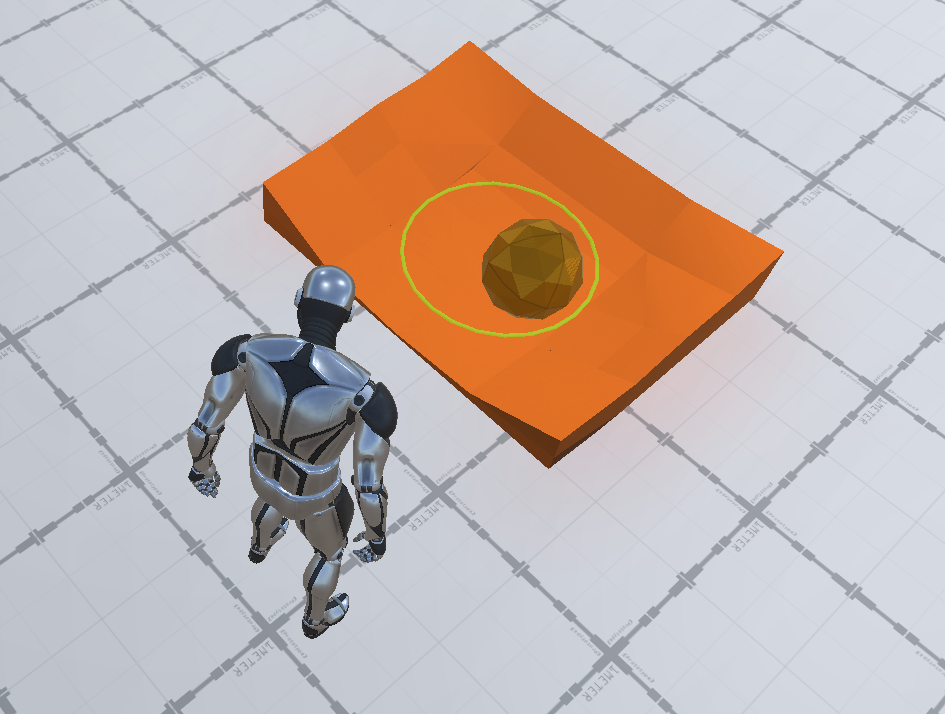
- Positive punishment:
- Respawning players at the start of an obstacle
- Punished Actions:
- Falling into an abyss

Custom Portal 2 Level
Since working on this Unity project, I've created a custom map based on Test #2 inside of Portal 2's in-game level editor. Since Portal 2 does not have the mechanic of a large box sliding on a low-friction surface – the closest thing would be Weighted Cubes on Propulsion Gel – I used Heavy Duty Super Buttons (the pressure switches) combined with Excursion Funnels (the blue directional gravity fields) to activate Panels or Piston Platforms in order to sustain the general idea of the puzzle. While the player now has manual control of shooting portals, the places that are available to shoot portals onto are limited above the puzzle's glass wall, meaning the player still has to send balls down in the correct order. This level is currently simple and short, but it serves as a proof of concept and introduction to this type of puzzle in Portal 2's level editor which can be expanded and iterated on in the future.
Custom Portal 2 Level Walkthrough Video
Back to top